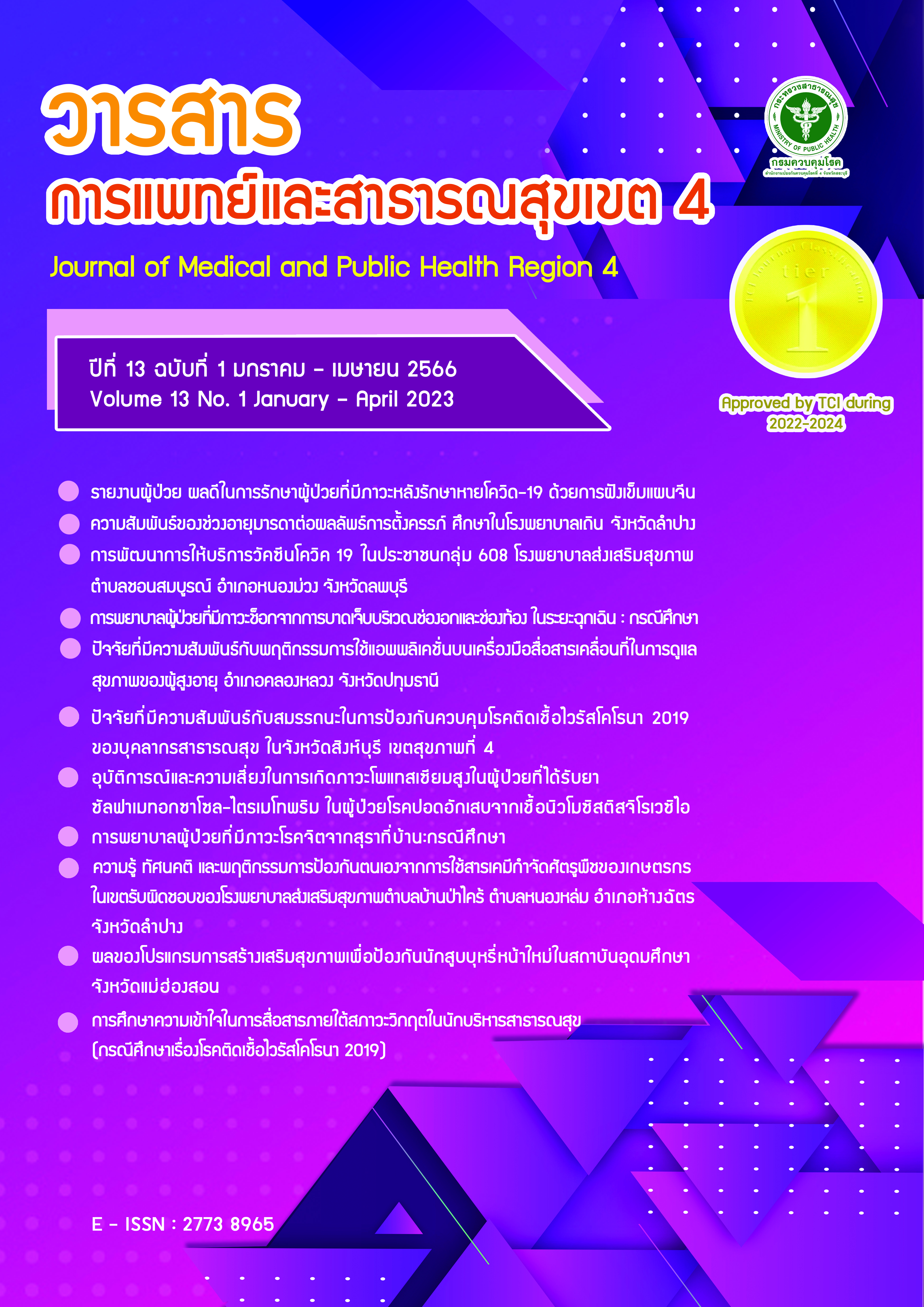Study of understanding communication under crisis conditions in Healthcare Managers (case study of COVID-19)
Main Article Content
Abstract
Studying Understanding Communication in Crisis Situations among Healthcare Administrators (Case Study of COVID-19) as Survey Research aimed to explore the knowledge base and perceptions of healthcare administrators regarding the importance of communication in crisis situations, particularly in the context of the COVID-19 pandemic. The data obtained from this study was used to develop future training curricula for high-level healthcare administrators under the Ministry of Public Health (MOPH) in Thailand. The study sample consisted of 31 healthcare administrators who participated in a high-level training program between February 1 and March 10, 2020. Data analysis was conducted using statistical inference. The study found that most healthcare managers perceive that communicating risks during a crisis is the same as communicating risks in normal situations. Communication during a crisis cannot be prepared in advance, and communication during a crisis is one-way communication, and the principles of crisis communication are not yet fully understood. The area where healthcare managers lack knowledge is the principles of communicating risks during a crisis, managing incidents in communicating risks during a crisis, and the definition of communicating risks during a crisis. The study suggests that healthcare managers should develop their knowledge on crisis communication, particularly in incident management and communicating risks during a crisis, and include it in high-level healthcare management training programs in the future.
Article Details

This work is licensed under a Creative Commons Attribution-NonCommercial-NoDerivatives 4.0 International License.
References
Covello, V.T., Risk communication: An emerging area of health communication research. In R.L. Heath (Ed.), Handbook of Public Health Communication. pp. 403-18. Sage Publications.1995.
GAO.Emergency Preparedness: FEMA Faces Challenges Integrating Community Preparedness into its Strategic Approach. Available form: http://www.gao.gov/products/GAO-10-193. 2010.
Coppola, Damon, E. K. Maloney. Communicating Emergency Preparedness: Strategies for Creating a Disaster Resistant Public. Taylor & Francis. Oxford. pp. 53-66. 2009.
Department of Disease Control. Risk Communication Assessment Handbook. Cooperative Agricultural Federation of Thailand Press. 2019.
Kasetsumsuk J. Principles and Strategies in Public Relations Communication for the Department of Communication Arts, Faculty of Communication Arts, Sripatum University.
Meaning of communication. [Internet]. Available form: http://www.krunuippk.ob.tc/page/page3.html Accessed 2010 September 1, 2010.


